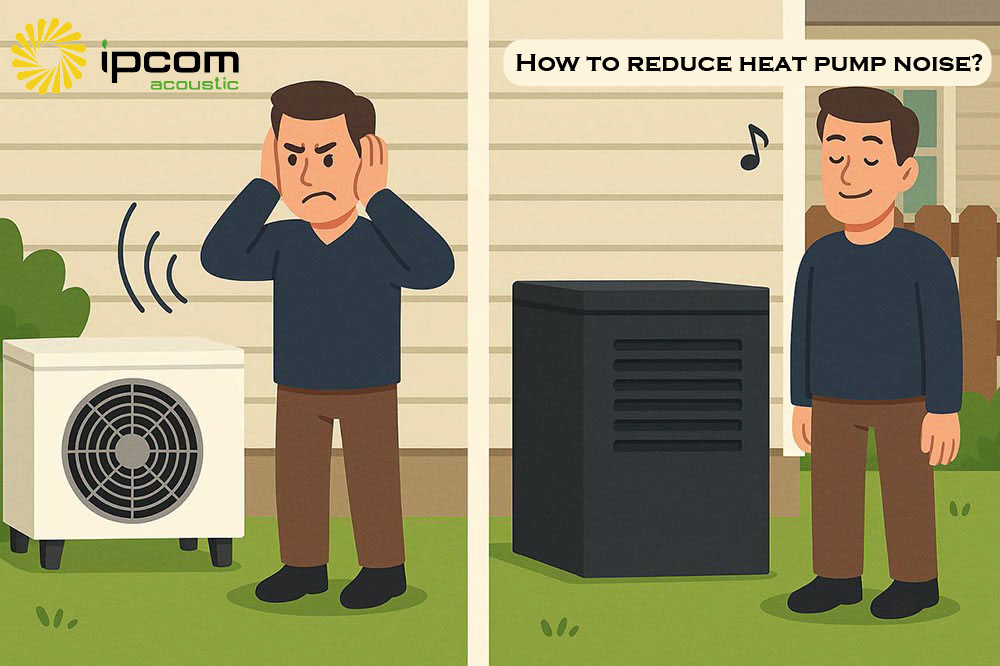Heat pumps are widely used in residential complexes, office buildings, and shopping centers. Such systems represent an eco-conscious way to control indoor climate in both warm and cold seasons. However, alongside their benefits, a serious acoustic issue has emerged — noise from heat pump systems. This disturbance can lead to tenant complaints, regulatory issues, and reduced comfort. But there are several solutions, which we’ll discuss below.
How to Reduce Heat Pump Noise: 5 Effective Methods
1. Use a Heat Pump Noise Reduction Cover
One of the most effective solutions is to install a heat pump noise reduction cover. These enclosures are specially engineered to reduce noise by up to 15–18 dB(A) without blocking airflow. They are ideal for clusters of outdoor units in residential and commercial buildings.
2. Use Sound-Dampening Barriers
Acoustic barriers or sound-reducing fences can block direct sound paths between the units and nearby living spaces. While not as effective alone, they can complement other solutions.
3. Relocate Units to a Quieter Area
If feasible, place outdoor units at a greater distance from windows, balconies, or pedestrian zones. Moving the units to a more isolated corner of the property can help minimize heat pump noise complaints.
4. Install Flexible Support Pads or Alternative Mounts
Vibration often amplifies the perceived noise from a heat pump. Using rubber-based mounts beneath the equipment can reduce vibration and help eliminate heat pump loud humming.
5. Maintain the System Regularly
Filters that have become clogged, loose fan blades, or aging motors can make the unit noticeably louder. Plan routine checkups to ensure the system runs quietly and efficiently.
What Is the Acceptable Acoustic Level for a Heat Pump?
Today, heat pumps are a familiar sight in almost every town and city across Europe. Legal acoustic limits are now in place to regulate their operation. The key rule is this:
- Up to 5 dB(A) above background noise during the day (7 a.m. – 10 p.m.)
- Up to 3 dB(A) in the nighttime period (10 p.m. – 7 a.m.)
According to the EEA, over 20% of Europeans are already exposed to long-term daytime noise from traffic at 55 dB(A) or higher.
At night, residential areas commonly experience ambient sound levels of 30–40 dB(A).
While older versions of HVAC equipment were often loud, modern units typically emit between 40–60 dB(A) at 1 meter. However, this may still be too much in quiet neighborhoods or during night hours.
Commercial Acoustic Solutions from IPCOM-Acoustic
Based on the facts outlined above, using a heat pump noise reduction cover is clearly recommended. One example is the solutions offered by the manufacturer IPCOM-Acoustic. These covers can lower unwanted sound by 12–18 dB(A) and help you meet legal noise requirements. Pricing begins at €1,051 per unit, depending on configuration.
Ask IPCOM-Acoustic today how to reduce heat pump noise in your development — and get proven, scalable solutions.

